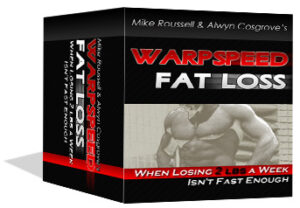Weight Loss and Distance Running
It’s that time of year in Boston. The “shufflers” are out in full effect.
For those of you who aren’t familiar with a “shuffler,” it’s an individual who has recently taken up distance running as a means of losing weight. As the weather gets nicer and the Boston Marathon rapidly approaches, you can spot shufflers out in droves all over Boston. They shuffle for a number of reasons:
1. They believe that shuffling at 2.5mph is actually more effective than walking at 2.5mph.
2. Usually, they’re about 80% of the way through the marathon training programs that were provided to them, and as a result, most are suffering from IT band problems, plantar fasciitis, Achilles and patellar tendinosis, sciatica, and a serious case of “whatthehellwasithinkingsigningupforthis-itis.”
3. Because they never learned to sprint, they run with zero hip flexion (check out Newsletter 77: Sprinting for Health for details).
4. They are simply trying to finish their exercise in the most efficient way possible. In other words, complete the task with as little discomfort as possible.
And here, we have the problem. Sally takes up running because she thinks she’ll lose some body fat. And, initially, she does lose weight because – to quote Alwyn Cosgrove – it’s a “metabolic disturbance” compared to doing nothing. Moving burns more calories than not moving.
However, over time, that activity injures Sally and fosters bad movement patterns, meaning that she’ll miss more exercise sessions down the road. And, she quickly starts searching for the most efficient means of completing her runs, so her body gets more and more efficient – meaning that it burns fewer calories to accomplish the same task. Whether it is three miles or 13 miles, it’s always about just finishing. Quantity always takes precedence over quality.
With March Madness upon us, pretend you’re watching a basketball game where you have two teams: Team A wants to win, and Team B wants to simply get through the 40 minutes of the game. Team A dives for loose balls, full-court presses, and hits the boards hard. Team B watches the clock. Who burns more calories? Team A, no doubt – because they get lost in their performance.
Back in college, did you learn more in the graded courses, or the ones that were simply pass-fail? And, as I asked in Maximum Strength, do you get stronger when you “train” or “work out?”
This, to me, is one more reason why interval training outperforms steady-state cardio on top of all the other reasons (e.g., excess post-exercise oxygen consumption, reduction of overuse injuries) that we already know. There is not a single effective exercise modality out there in a non-beginner population that works simply because one shows up and finishes. The outstanding success loads of folks have had with Warpspeed Fat Loss is a perfect example; Cosgrove and Mike Roussell challenged them to be just a little bit better at each successive training session – either with loading or number of sets completed.
If you are going to distance-run (and aren’t a competitive endurance athlete), focus on going faster, not fine-tuning the art of pacing yourself when grandmothers are passing you with their walkers. Pacing yourself doesn’t even work at all-you-can-eat buffets; everyone knows you get full too fast and never live up to your gluttony potential. And, as I always say, if it doesn’t fly at all-you-can-eat buffets, it just ain’t right.
If you’re going to interval train, your goal is to go faster each time. More watts, more steps in a given time period, more ghastly stares from the lady reading a magazine on the leg press, whatever. Mike Boyle had some great thoughts on this front in a recent submission HERE. As long as it is quantifiable and you’re busting your hump to compete against your previous best, I’m happy.
I like the idea of camaraderie and/or competition with others in interval training, too. For example, our staff did this 16-yard x 16-trip sled medley three Thursdays in a row – and each time, it was a little faster (meaning that we had fewer rest periods between sets):
Later in the week, I’ll be back with more thoughts to keep this headed in the right direction.
New Blog Content
All the Best,
EC



